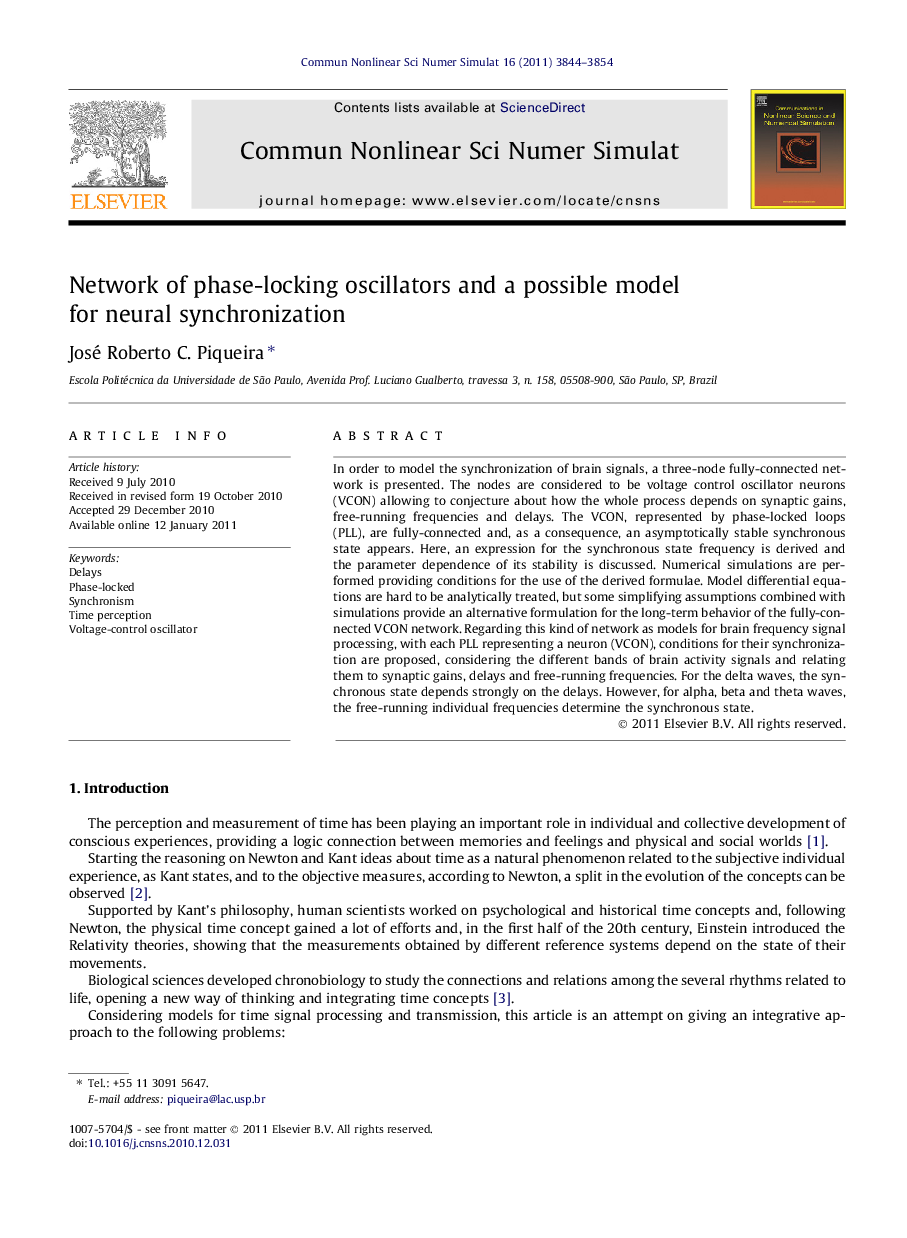| Article ID | Journal | Published Year | Pages | File Type |
|---|---|---|---|---|
| 758548 | Communications in Nonlinear Science and Numerical Simulation | 2011 | 11 Pages |
In order to model the synchronization of brain signals, a three-node fully-connected network is presented. The nodes are considered to be voltage control oscillator neurons (VCON) allowing to conjecture about how the whole process depends on synaptic gains, free-running frequencies and delays. The VCON, represented by phase-locked loops (PLL), are fully-connected and, as a consequence, an asymptotically stable synchronous state appears. Here, an expression for the synchronous state frequency is derived and the parameter dependence of its stability is discussed. Numerical simulations are performed providing conditions for the use of the derived formulae. Model differential equations are hard to be analytically treated, but some simplifying assumptions combined with simulations provide an alternative formulation for the long-term behavior of the fully-connected VCON network. Regarding this kind of network as models for brain frequency signal processing, with each PLL representing a neuron (VCON), conditions for their synchronization are proposed, considering the different bands of brain activity signals and relating them to synaptic gains, delays and free-running frequencies. For the delta waves, the synchronous state depends strongly on the delays. However, for alpha, beta and theta waves, the free-running individual frequencies determine the synchronous state.
Research highlights► A fully-connected three node PLL network presents a long-term synchronous state. ► This kind of network models brain signal processing, with PLL representing neurons. ► This state presents zero spatial frequency and phase errors independently of time. ► Different bands of brain activity signals are related to gains, delays and frequencies. ► For delta waves, synchronous state depends on the delays. ► For alpha, beta and theta waves, free-running frequencies determine the steady state.
